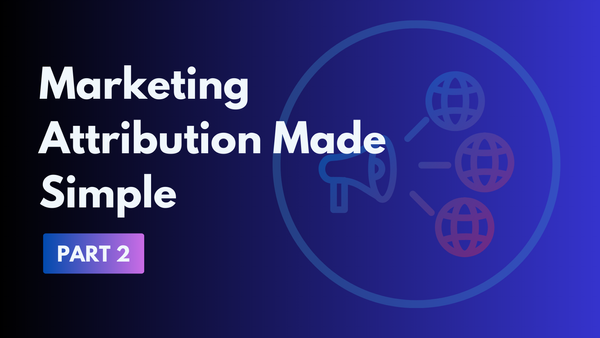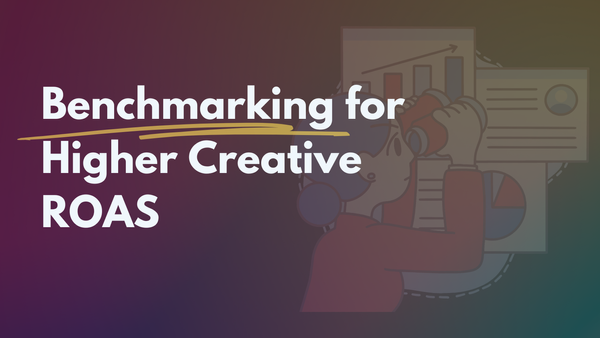WTF is Creative Testing?
Creative testing is an absolute necessity for advertisers; it's what allows the creation of high-performing ads. But what is it? How does it work? How do you get started?

For seasoned marketers, the process of Creative Testing is absolutely essential — it's what allows them to create and deliver high-performing ads. But for those just starting out, small teams, or founders with lean budgets, the go-to method of creating ads is well...'let's just put something out and see what happens'.
And it's not false to say that more often than not, the 'let's just do it' ads fail. From over 200 founders of small D2C brands that we've spoken to, this rings true for a majority of them.
Creative Testing can help find the winning versions of your ad faster, delivering ads with much, much better results. So...WTF is it?
Simplifying Creative Testing
Put simply, Creative Testing is the process of evaluating different creative elements within ads (and in general, marketing material) to determine which version of the ads can give the highest return.
This process typically involves testing combinations of images and copy, and it's often used to optimize image and copy combinations in ad campaigns. This process is done before the launch of the final ad campaign.

Advantages of Creative Testing
- Relevance and Engagement: Creative testing ensures that ad campaigns are relevant, appealing, and engaging to the target audience. It's about storytelling that captures attention and interest.
- Cost and Time Efficiency: By identifying what works and what doesn't, businesses can save money on ineffective ad spend and time on unproductive marketing efforts.
- Optimized Ad Assets: Testing helps in creating ads that resonate with the audience, leading to better campaign performance.
- Understanding Customer Behavior: It provides insights into customer preferences and behaviors, which is valuable for market research and decision-making.
- Future Campaign Insights: Continuous testing and iteration help in optimizing future campaigns, reducing mistakes and wastage.
Risks of Not Using Creative Testing
Without creative testing, you're pretty much shooting one arrow at a target in the dark, hoping that it lands. With it, you're shooting a whole bunch of arrows—some will most likely land. Not implementing creative testing can lead to wasted resources and missed opportunities; unoptimized ads can result in lower conversion rates and a reduced return on investment. Additionally, without insights from testing, future campaigns might not be as effective, leading to a cycle of inefficient marketing efforts.
Types of Creative Tests
There are three most popular types of creative tests:
- Split Testing (A/B Testing): This involves comparing two versions of an ad to see which performs better. Typically, only one variable in an ad is changed—narrower definition allows for testing on individual levers of the creative.
- Lift Testing: Used for measuring significant changes in creatives, like comparing different media types or audience segments.
- Dynamic Creative Testing: Useful in campaigns with a large volume of creatives, this method involves testing multiple ad sets to identify the most effective ones.
Best Practices for Effective Creative Testing
So where do you even begin? There are a few basic things to keep in mind before you get started with your creative tests:
- Setting Clear Goals: Define specific business goals and align creative tests with these objectives.
- Hypothesis Testing: Develop and test hypotheses based on brand messages.
- Audience Identification: Ensure the ads are targeting the right audience, or the results may not be reflective of the target market's responses.
- Iterative Testing and Analysis: Continuously analyze and refine creatives based on test outcomes.
- Patience and Flexibility: Be open to learning from both successful and unsuccessful tests and adapt strategies accordingly.
- Validating Results: Use statistical significance and other analytical methods to validate the findings of creative tests.
Creative testing is an indispensable tool in the marketer's toolkit. It helps ensure that marketing campaigns are effective, engaging, and efficient, ultimately leading to better ROI and deeper insights into customer preferences and behaviors.
Further Resources
In case you're interested, here are a few more resources for you:
- How to Test Facebook Ads Creative, Dara Denney
- 4 Reasons Why AI-Powered Creative Testing is the Next Big Disruptor in Advertising
- 7 lessons from Sprout Social’s year of creative testing on social media
For more such content, subscribe to Analyze That Ad today, and follow us on X (formerly Twitter)!





